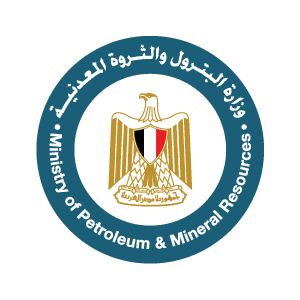Targeted Products
MDF
Medium-density fibreboard is an engineered wood product made by breaking down hardwood or softwood residuals into wood fibres, often in a defibrator, combining it with wax and a resin binder, and forming it into panels by applying high temperature and pressure. MDF is generally denser than plywood.
Melamine
Melamine is a chemical compound that has a number of industrial uses, including the production of laminates, glues, dinnerware, adhesives, molding compounds, coatings and flame retardants. Melamine is a name used both for the chemical and for the plastic made from it.
Bioethanol
Bioethanol or Ethanol is a flammable colorless liquid. When used as an alternative fuel, ethanol is referred to simply as Bioethanol. Bioethanol is frequently used as motor fuel or as an additive in gasoline and is an option for more “renewable” energy.
Purified Terephthalic Acid
Terephthalic acid is one isomer of the three phthalic acids. It finds important use as a commodity chemical, principally as a starting compound for the manufacture of polyester (specifically PET), used in Intermediates, Automotive Care Products, Paints and Coatings, clothing and to make plastic bottles, it is more economical to use PTA than the alternative dimethyl terephthalate (DMT). 2. P-Xylene is the feedstock for all terephthalic acid /production/. Oxidation catalysts and conditions have been developed which give nearly quantitative oxidation of the methyl groups, leaving the benzene ring virtually untouched. These catalysts are combinations of cobalt, manganese, and bromine, or cobalt with a co-oxidant.
Acetic Acid
Acetic Acid is a clear colorless liquid with a strong odor of vinegar. Corrosive to metals and tissue. Used to make other chemicals, as a food additive, and in petroleum production. Acetic acid is used in the preparation of metal acetates, used in some printing processes; vinyl acetate, employed in the production of plastics; cellulose acetate, used in making photographic films and textiles; and volatile organic esters (such as ethyl and butyl acetates), widely used as solvents for resins, paints, and lacquers.
Polyethylene Terephthalate
PET is short for polyethylene terephthalate, the chemical name for polyester. PET is a clear, strong, and lightweight plastic that is widely used for packaging foods and beverages, especially convenience-sized soft drinks, juices and water. It is a hard, stiff, strong, dimensionally stable material that absorbs very little water. It has good gas barrier properties and good chemical resistance except to alkalis (which hydrolyse it). Its crystallinity varies from amorphous to fairly high crystalline.
Vinyl Acetate
VAM is a key intermediate used in the making of a number of polymers and resins for adhesives, coatings, paints, films, textiles and other end products. The largest derivative is polyvinyl acetate (PVA) which is mainly used in adhesives as it has good adhesion properties to a number of substrates including paper, wood, plastic films and metals. The second largest consumer of VAM is polyvinyl alcohol (PVOH) which is manufactured from PVA. Main uses for PVOH include textiles, adhesives, packaging films, thickeners and photosensitive coatings.
Polyether Polyols
The major use of polyols is in polyurethane (PU) foams, flexible or rigid, which are produced by the reaction of a polyol with an isocyanate, usually toluene diisocyanate (TDI) or methyl di-p- phenylene isocyanate (MDI). Flexible foams are primarily used in cushioning applications such as furniture, bedding and car seats, and in carpet underlay. Rigid foam’s largest application is in the construction industry, where it is mostly used for insulation. Rigid foam is also used in commercial refrigeration and packaging. Smaller uses for polyether polyols include elastomers, adhesives and sealants, surface coatings and PU fibres. Flexible PU foams use higher molecular weight polyols (in a range of 2,000 to 10,000), while rigid foams use lower molecular weight polyols. PU markets are generally considered mature in North America and growing at a moderate pace. South America is considered to be a market developing more aggressively in line with growth in GDP, demographics and purchasing power.
Polyacetals
Polyacetal is a high volume engineering plastic. It is known for its high dimensional stability, hardness and creep resistance. These qualities allow it to be used as a replacement for metal parts. Along with its copolymer resins, it is widely used as an engineering plastic across almost every industry. This includes mechanical, automotive, plumbing, hardware, and machinery parts as well as electronic and electrical components. Examples are pump and filter housings, shower heads, machinery parts such as gears, bearings, rollers, and conveyor chains, airflow valve fittings and valves, parts in the transportation industry such as fuel pump housings, cooling-fan parts, fuel caps, door handles, steering column – gear shift assemblies, and household appliances such as food mixer parts, pump and water sprinkler parts.
Styrene
Styrene, also known as ethylbenzene, vinyl benzene, and phenylethene, is an organic compound with the chemical formula C6H5CH=CH2. This derivative of benzene is a colorless oily liquid that evaporates easily and has a sweet smell, although high concentrations have a less pleasant odor. Styrene is one of the most important monomers produced by the chemical industry today. Styrene monomer is a basic building block of the plastics industry. Styrene is the precursor to polystyrene and several copolymers.




